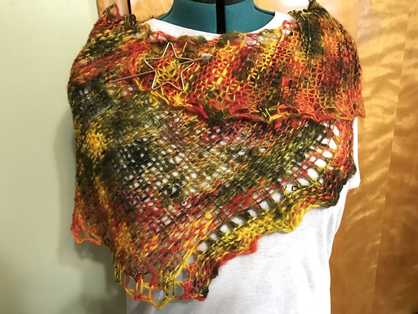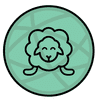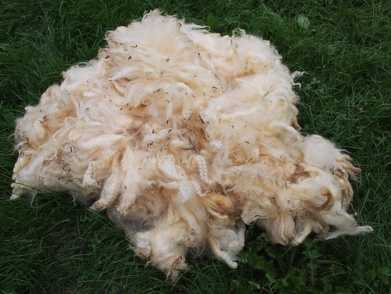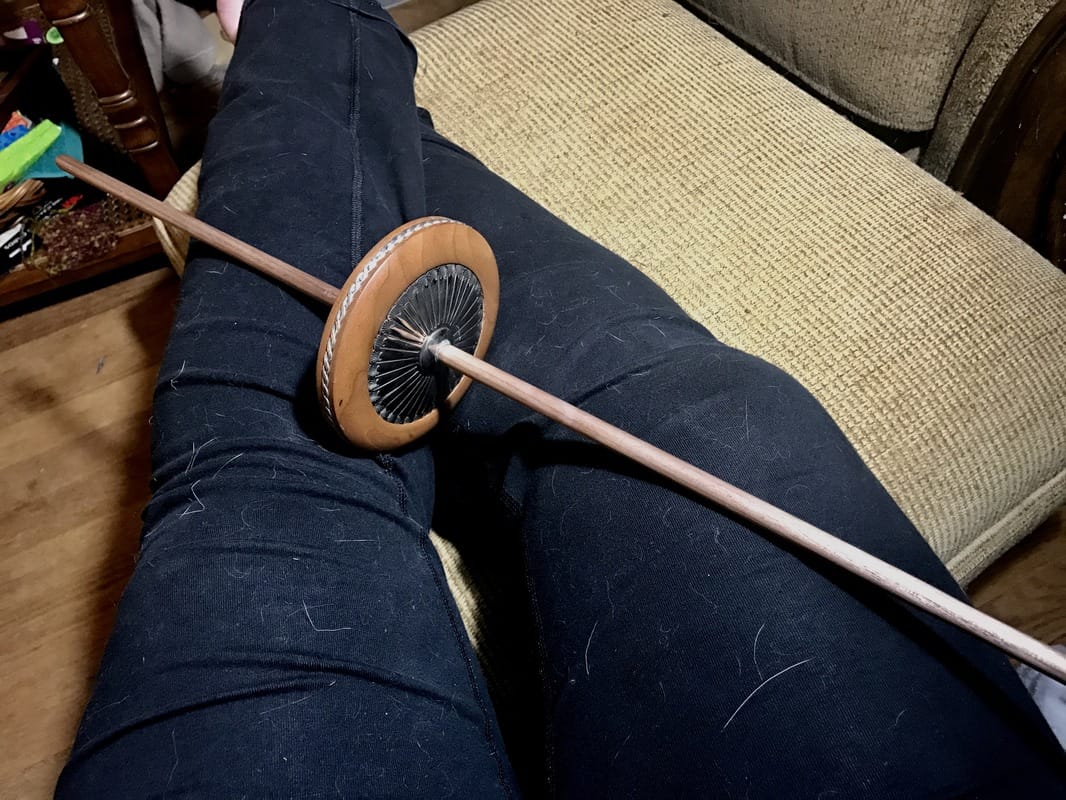 This shaw is made from a East Fresian/Polypay cross sheep! Click to find out more about my process, including the pattern I used for this shawl! There is something very satisfying about making a piece of garment from "scratch". I started spinning in June of 2016 and was immediately hooked.A couple months later, I went to my first Sheep and Wool festival and came home with a whole load of different fleeces! One of which is this beauty (below). This fleece was "donated" by a East Fresian/ Polypay cross sheep. As you can see from the pictures above, this fleece came fairly clean. It has a slight yellow tint to it due to the lanolin present in the sheep's woo. It also had a little bit of lanolin clotting at the tip the locks. The first step is to scour (clean) the wool. I scoured the wool by carefully washing it with hot water and cheap sampoo. After scouring the wool, I set out to card some of this fleece by hand. For those who do not know, those to big paddles (left) are called "hand carders". They are basically very large and fine-toothed flicker brushes (right). Carding a feece open up the fiber to allow small dirty particle and debris to fall out, and arrange individual fiber in a way that is easy to spin (below). The resulting fiber is a sleek, bright white cloud. The raw fleece started out at about 3 pounds. After scouring, it weighed in just under 2 pounds. For this shawl, I used about 3 ounces of fiber. Fast foward to late December, my boyfriend bought me a Navajo spindle from Golding Fiber Tools (left). I excitedly spun some yarn on the spindle and shamelssly used my dog as backdrop to earn more internet points (right). My obliging dog, Kira, has a slightly yellow, and creamy white coat. By contrast, one can see how brightly white the yarn turned out to be. Notes for spinners: This fiber is probably closer to East Fresian micron count (low 30s) than it is Polypay (high 20s). It has long wool and medium wool characterstics in that it is sleek and shiny (long wool), and carried quite a bit of spingyness (medium wool). The staple length of the fiber is over 4 inches, so it was a very pleasant spin. The finished skein is very airy and fluffy, the result of spinning with a long draw technique (left). I then dyed it with Jaquard acid dye (right). I did not follow a specific pattern for this shawl. Instead, I used a general formula for making a shawl in a swirl shape until I ran out of yarn. Start Row 1: Cast on 5 stitches Row 2: Purl all stitches Body Row 3: K1, YO, Knit to the end. Row 4: K1, YO, Purl to the end. Row 5: Same as row 3. Row 6: Same as row 4. Row 7: Same as row 3. Row 8: K1, Purl 4 together, Purl to the end. Repeat row 3-8 until desired size. Edging (optional) Row 1: K1, YO until one stitch is left, then knit last stitch. Row 2: Purl to end. Repeat Row 1 and 2 until the edging is the desired length then bind off with technique of your choice. Blocking (right) is important in this project as it gives the edging its irregular shape. Well, I sure hope you enjoyed this process as much as I have! Stay tuned for more Fibery Adventure!
-Cindy
1 Comment
|













 RSS Feed
RSS Feed
